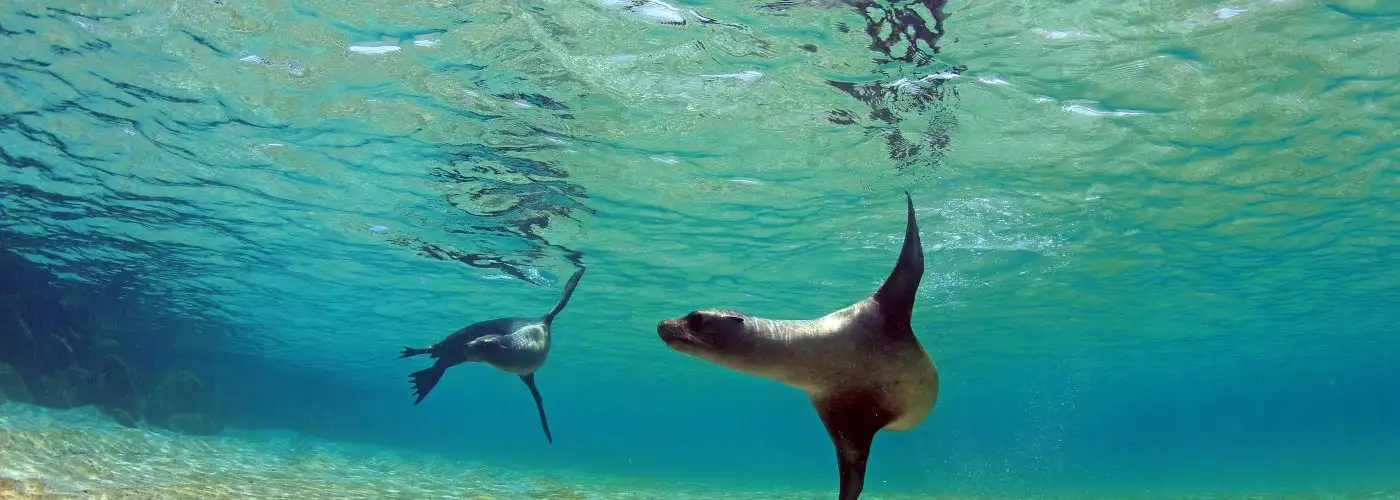The sheer variety of animals in the Galapagos is what separates a trip there from any other type of vacation. About 80 percent of its land birds, 97 percent of its reptiles and land mammals, 20 percent of its marine species, and 30 percent of its plants are only found in the Galapagos. I was blown away by the different species I saw on my recent trip—here are 10 you won’t want to miss if you go.
The Unique Animals of the Galapagos
Image Gallery
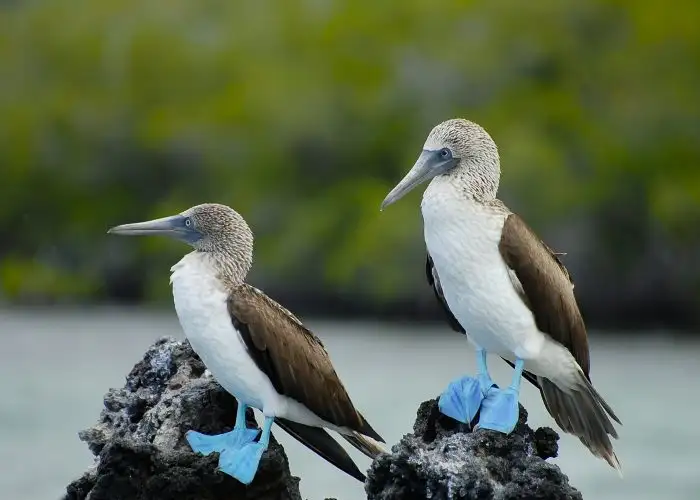
I only saw Blue-footed boobies on my trip, but there are three different species of these seabirds. All three plunge into the open ocean for feeding—catching fish on the way back to the water surface. Red-footed boobies are the least seen by humans, and mainly found in the colony on Genovesa. But, you'll find colonies of the other two species flying close to shore or nesting on the ground on many of the islands.

I only saw Blue-footed boobies on my trip, but there are three different species of these seabirds. All three plunge into the open ocean for feeding—catching fish on the way back to the water surface. Red-footed boobies are the least seen by humans, and mainly found in the colony on Genovesa. But, you'll find colonies of the other two species flying close to shore or nesting on the ground on many of the islands.
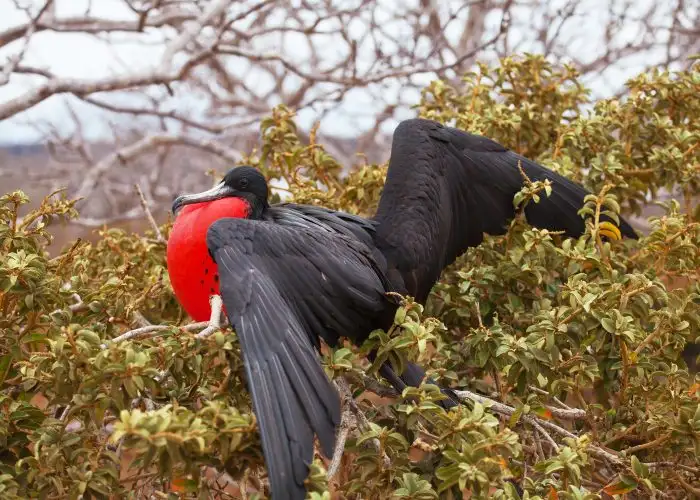
You'll find two species of Frigatebirds—the Magnificent Frigatebird and the Great Frigatebird—which are native to the Galapagos islands. Their name means "man of war" and they're known for their aggressive feeding habits, like snatching other birds in flight.
Frigatebirds are most notable by their red gular pouch, which inflates when trying to attract a female. North Seymour Island has the most active Magnificent colony, although they can be seen on other islands.
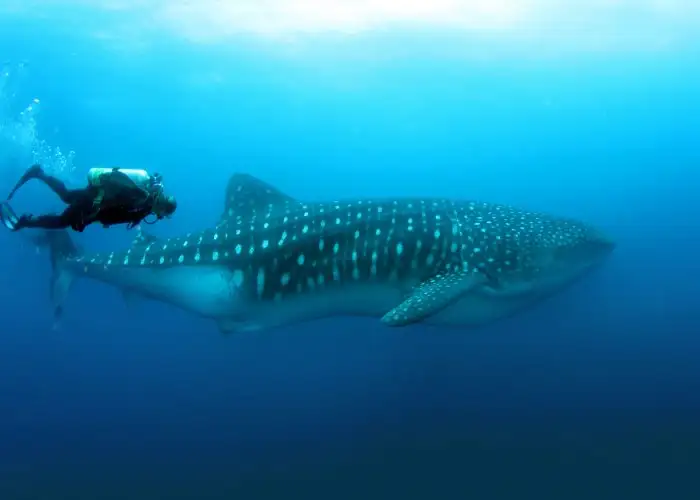
Whale sharks, massive fish that can grow to 40 feet, are found year-round, especially up by Wolf and Darwin from May to December. They're considered the world's largest fish, but they aren't dangerous—they have filter feeders and eat plankton.
Whale sharks are listed as a vulnerable species, and efforts are in place to learn more about the large amount of pregnant females that come to the islands. You probably won't encounter them on an average snorkeling trip, though. You'll have to dive in order to see them.
The Galapagos islands are home to 30 different shark species. I saw whitetip reef sharks on a day-snorkeling trip off of Isabela. Other shark species include hammerheads, Galapagos sharks, horn sharks, and tiger sharks.
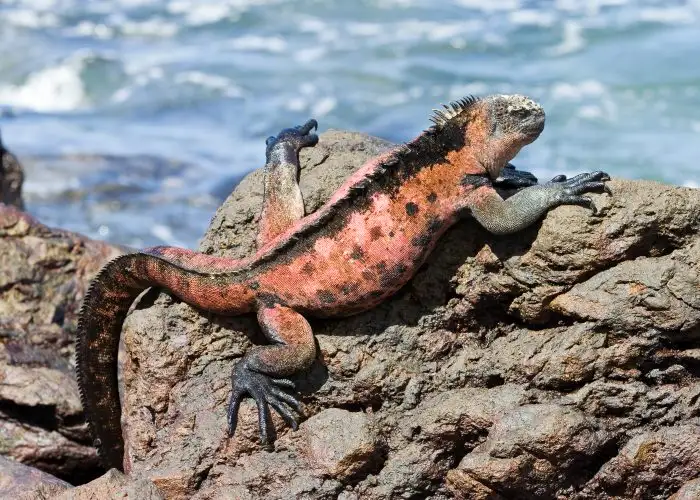
You'll definitely encounter your fair share of marine iguanas on any Galapagos trip. These endemic Galapagos animals are everywhere, and they're the only sea-going lizard in the world—meaning they live on land but feed in the sea. It's not as common to find them in the water, though, as they can't stay in cold water temperatures for too long. Over my week-long trip I only saw one swimming, but it was a highlight of the trip.
A marine iguana will change color as it matures. Young ones are black, and then depending on the island they live on, they will change colors ranging from red and black, to black, green, red, and gray as they get older. They also become more colorful during mating season.
You'll find the most colorful marine iguanas on Espanola (they're nicknames "Christmas Iguanas"). The total population of these animals in the Galapagos is estimated to be between 200,000 to 300,000. They live to be about 60 years old.
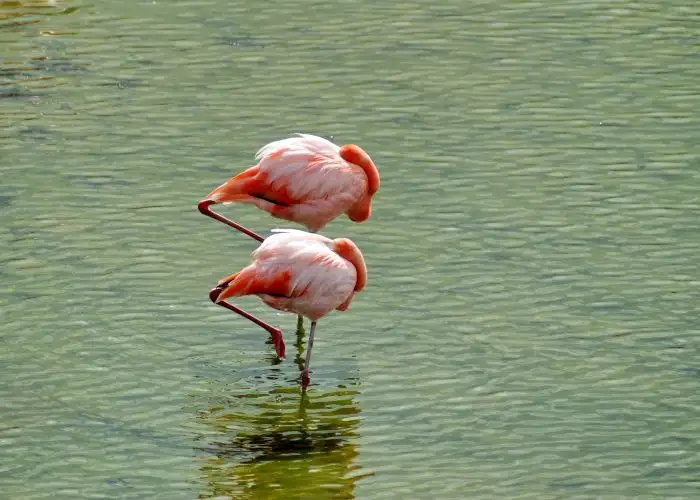
With only a population around 350, the Galapagos flamingo is considered an endangered species. You can find them in saltwater lagoons such as Flamingo Lagoon on Isabela. The population is stable but threatened by introduced animals.
Like most other flamingo species, the Galapagos Flamingo feeds on brine shrimp. The pink color brightens with adulthood and comes from the beta carotene in their food supply chain.
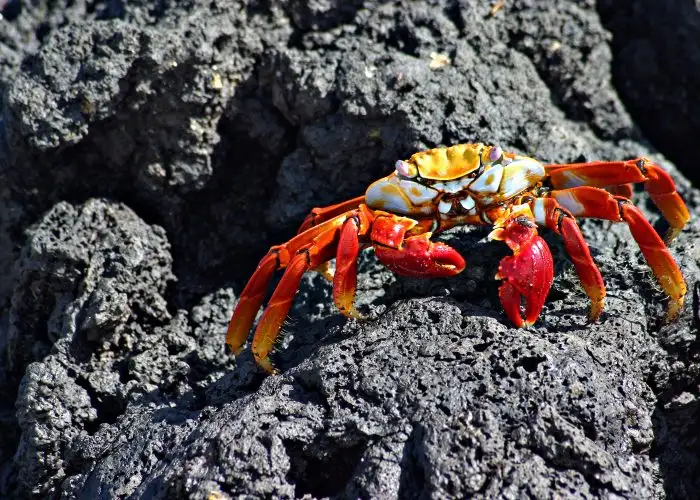
Some of my favorite Galapagos animal encounters were with these crabs while trying to chase them for a picture as they darted under rocks. Their striking red color contrasts nicely with the volcanic sand and lava rocks. They're extremely common, and you're likely to see them on any trip. Look for an abandoned shell so you can get a good look at their bodies and the blue color underneath.
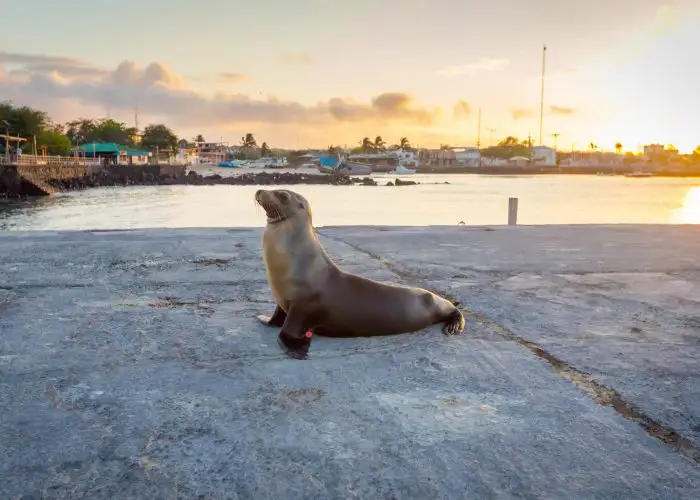
Both of these Galapagos animal species have populations over 50,000 throughout the islands. Sea lions are probably the most commonly encountered animals in the Galapagos, as they tend to hang out around docks and beaches. They're very friendly, but you should respect their space as males can sometimes get aggressive. Fur seals tend to stay in areas not visited by humans and are smaller than the sea lion. If you're lucky, you may be able to swim with them on a snorkeling excursion.
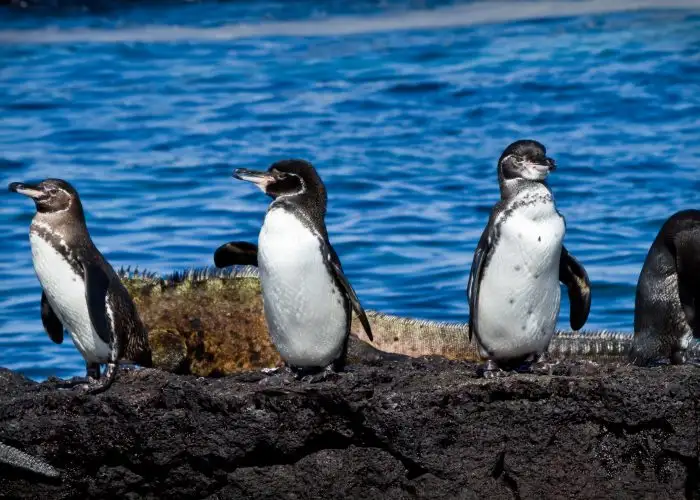
The Galapagos Penguin, which is endemic to the Galapagos, is the only kind of penguin that lives either at or above the equator. You'll find them in the colder waters around the western islands of Fernandina and Isabela.
There are about 2,000 total, and they can also sometimes be found on Santiago, James, Bartolome, and Floreana. Due to the small population size and other factors, they're listed as endangered. They’ll often swim with you during a snorkel excursion and can swim and dive at incredible speeds.
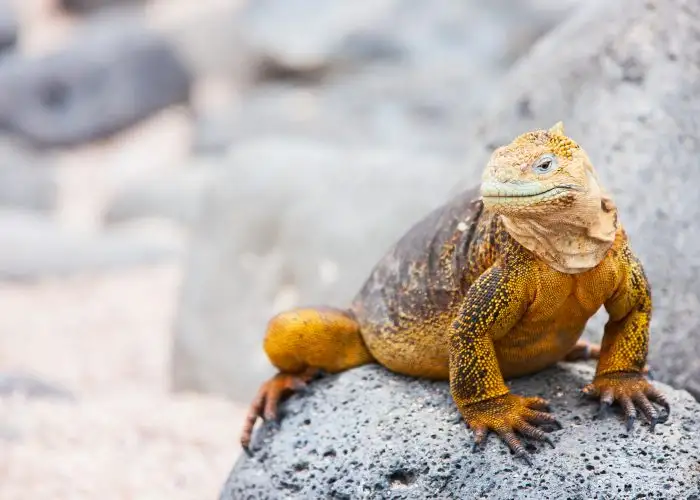
These long, yellow iguanas are endemic to the Galapagos and exist as three different species, with the most common type native to six islands. Males can weigh up to about 30 pounds. Their populations were considered stable until 1975, when feral dogs became a problem on Isabela and Santa Cruz, forcing a breeding and rearing center to be established. This program was successful, and now all populations are considered healthy.
You'll find them in dry areas. In the mornings they absorb the sun's heat, while in the afternoon they retreat to shady areas by cacti, rocks, and trees. At night they burrow themselves into the ground to maintain body heat.
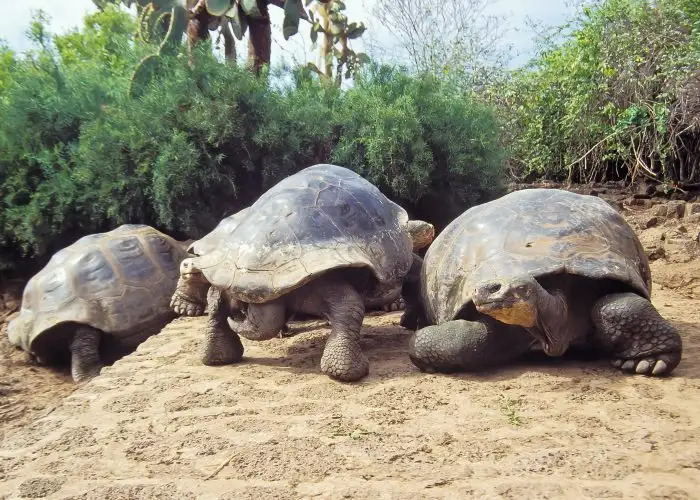
Perhaps the most popular of all animals in the Galapagos are the Galapagos tortoises, which are now one of the two remaining groups of giant tortoises in the entire world—the other is found on Aldabra Atoll in the Indian Ocean. They are endemic to the Galapagos Islands, and the word galapago translates to saddle, which is how early settlers referred to tortoises because of their shell shape.
Through extensive research, 14 separate populations across the islands have been identified, but only 11 now remain. Most of these Galapagos animals were or are endangered. Today, the Galapagos National Park and Charles Darwin Foundation's conservation efforts have saved many of the populations, and there are about 20,000 to 25,000 on the islands today.
Editor’s Note: Tourism is one of Ecuador’s main sources of income and is instrumental in helping the country recover from the earthquake in April 2016, which devastated a large part of its coast. Traveling through a sustainable tour company is a great way to donate to the country and communities affected. Or, consider making a donation here.
More from SmarterTravel:
- Galapagos: An Island-by-Island Guide
- 10 Essential Items You Need for a Galapagos Vacation
- How This Tiny Island Could Change Sustainable Tourism
Ashley traveled to the Galapagos Islands courtesy of G Adventures. Follow all of her adventures (big and small) on Instagram and Twitter.
We hand-pick everything we recommend and select items through testing and reviews. Some products are sent to us free of charge with no incentive to offer a favorable review. We offer our unbiased opinions and do not accept compensation to review products. All items are in stock and prices are accurate at the time of publication. If you buy something through our links, we may earn a commission.
Related
Top Fares From
Today's Top Travel Deals
Brought to you by ShermansTravel
Shop and Save with Country Inns...
Patricia Magaña
 Hotel & Lodging Deals
Hotel & Lodging Deals
$229 -- Chicago: Discounted Rates and...
Francesca Miele
 Hotel & Lodging Deals
$229+
Hotel & Lodging Deals
$229+
$188 -- Honolulu: Save on Oceanview...
Abigail Lamay
 Hotel & Lodging Deals
$188+
Hotel & Lodging Deals
$188+
